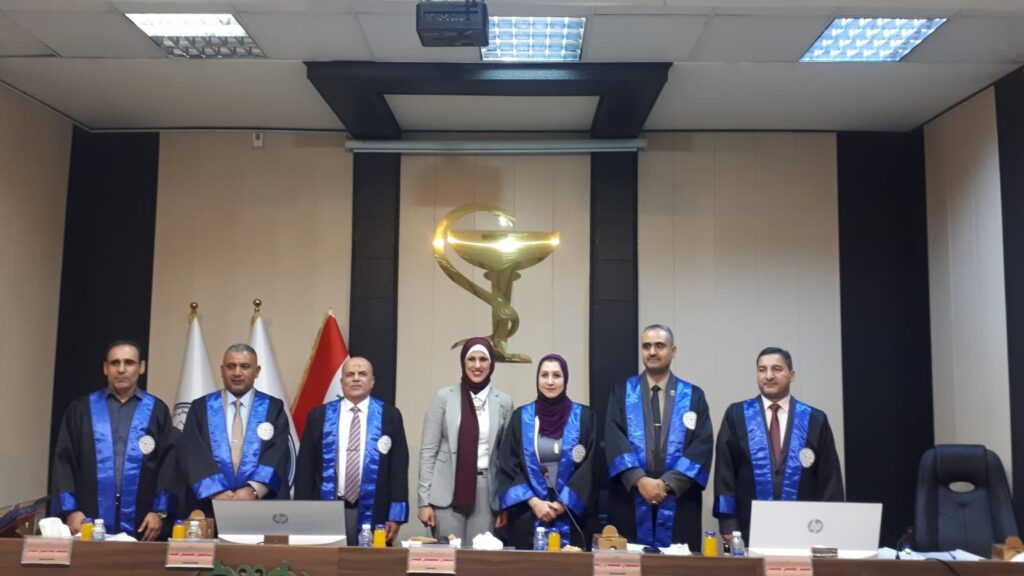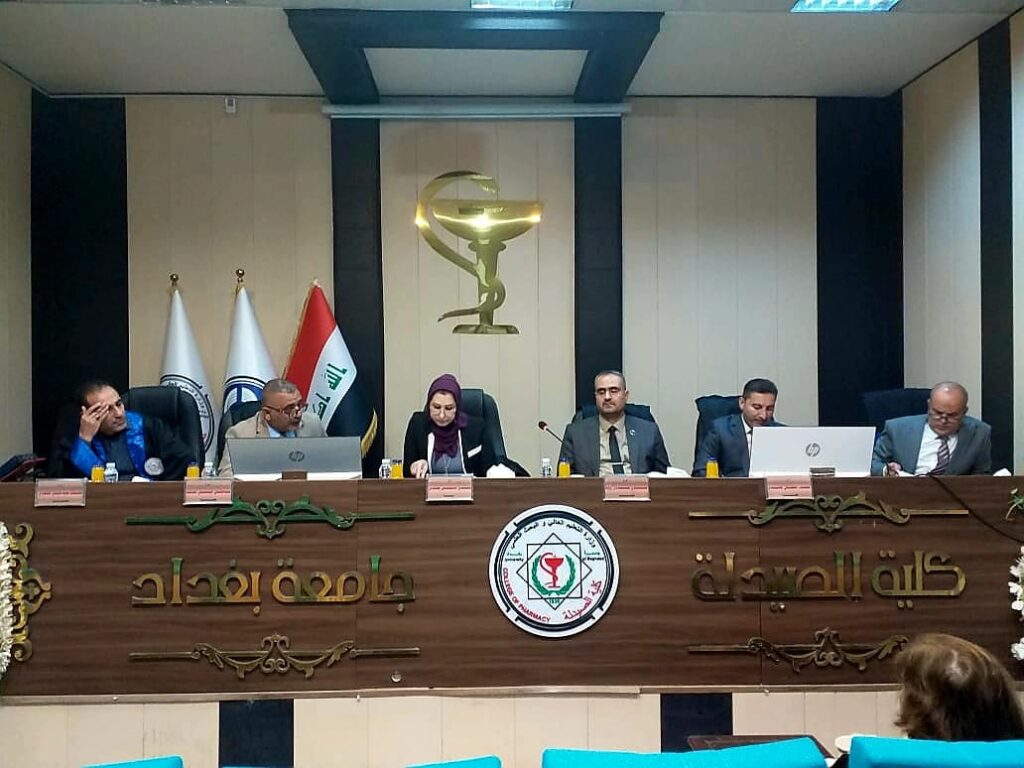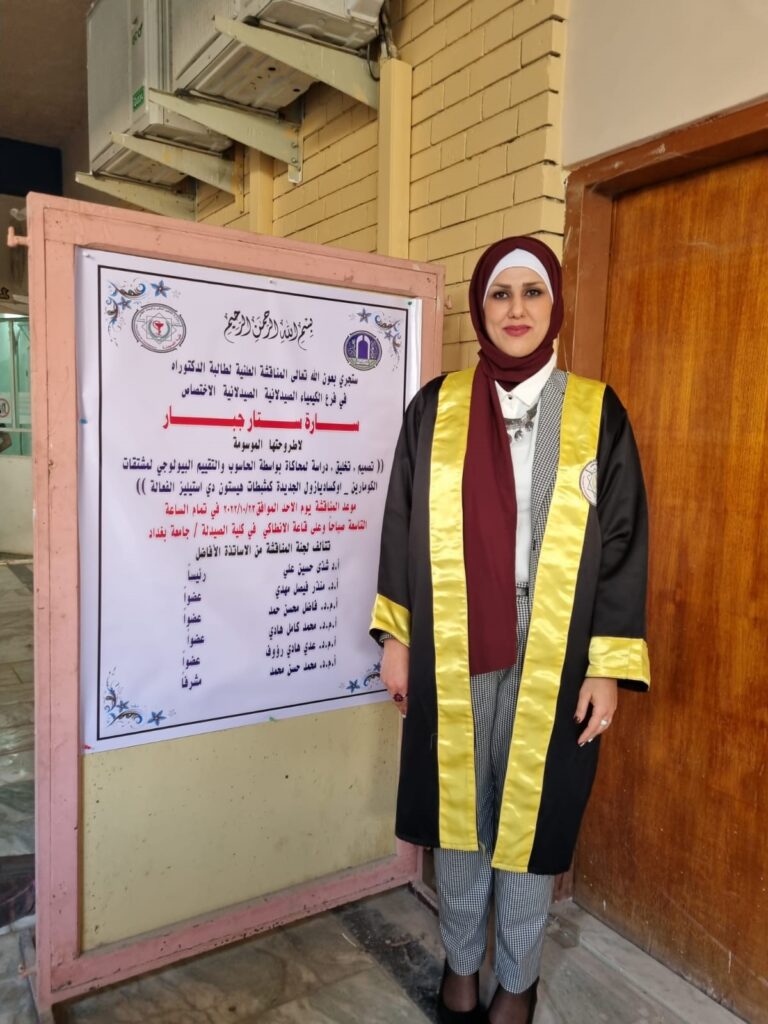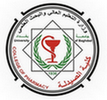The Faculty of Pharmacy discussed the PhD thesis entitled “Synthesis, Characterization, Insilco Study and cytotoxic Evaluation of New Coumarin-Oxadiazole Derivatives as Potent Histone Deacetylase Inhibitors” by Sarah Sattar Jabbar and her supervisor, Ass. Prof. Dr. Mohammad Hassan Mohammad, in the Department of Pharmaceutical Chemistry.The study aimed to find alternative motifs equipotent to the classic HDAC inhibitor as one of the continued improvements of histone deacetylase inhibitors. Cancer is quite possibly the most well-known cause of death in the world. For all the discovery of numerous chemotherapeutic medications that suppress uncontrolled cell division measures for the therapy of different malignant growths, the side effects and resistance of these medications are an urgent disadvantage. Numerous investigations are being conducted to find and develop effective anticancer medications. Epigenetic therapeutics are the new generation of chemotherapeutics for treatment of cancer, histone deacetylase inhibitors have been effectively found in this generation. One of the continued improvements of histone deacetylase inhibitors is finding alternative motifs to the classic HDAC inhibitor. The study included two series of new HDAC inhibitors bearing coumarin and 6-bromocoumarin as cap group ,alkyl thio oxadiazole as linker group and acyl semicarbazide, dithiocarbamate, hydrazide and hydrazide derivatives as ZBG have been designed, synthesized and evaluated for their cytotoxic activity against two cell lines, MDA-MB-231 (a human breast cancer cell line) and HepG2 (a human hepatocellular carcinoma cell line). In this work, new derivatives were derived from 1,3,4-oxadiazole-2-thiol as a scaffold unit. Coumarin-3-carboxylic acid or 6-bromocoumarin-3-carboxylic acid were activated by using coupling reagent the EDC.HCl and HOBt to produce activated HOBt esters, followed by the hydrozinolysis of HOBt esters to give compounds IIa and IIb then, synthesis of the oxadiazole nucleus by refluxing an ethanolic suspension of hydrazide with CS2 in the presence of (KOH) to give compounds IIIa and IIIb that undergo nucleophilic substitution (SN2) reaction with 5-bromoethylvalerate in dry DMF and in the presence of anhydrous potassium carbonate as a catalyst to give compounds IVa and IVb , and the reaction of ethyl ester of these compounds with semicarbazide HCl and hydrazine hydrate to give compounds F1a , F1b, F2a and F2b respectively. N-acylation of compounds F2a, F2b using acetyl chloride and chloroacetyl chloride to give compounds F3a, F3b and compounds F4a, F4b respectively. Reaction compounds F2a and F2b with carbon disulfide as the sulfur source usually under basic conditions to give compounds F5a, F5b as dithiocarbamate salts. Molecular docking studies exhibited the possible binding modes of compounds of two series to the active site of several histone deacetylase isoforms, and the results (binding free energy, number of hydrogen bonds, and distance between the zinc ion of the binding site and the heteroatoms of the ZBG group) indicated that they could be successful candidates as histone deacetylase inhibitors.







